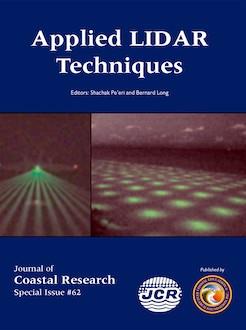The National Oceanic and Atmospheric Administration's (NOAA) National Geodetic Survey (NGS) is mandated to map the national shoreline, which is depicted on NOAA nautical charts, serves as an important source in determining territorial limits, and is widely used in various coastal science and management applications. The National Geodetic Survey's primary method of mapping the national shoreline is through stereo compilation from tide-coordinated aerial photography. However, over the past decade, NGS has conducted several phases of research to develop, test, and refine light detection and ranging (LIDAR)–based shoreline mapping procedures. Although important, reliable estimates of uncertainty of these products have, unfortunately, lagged behind in development. We attempt here to outline possible solutions to this lack. Specifically, this study presents and compares two new methods of assessing the uncertainty of NGS' LIDAR-derived shoreline: an empirical (ground-based) approach and a stochastic (Monte Carlo) approach. We observe uncertainties in the horizontal position of the shorelines on the order of 1 to 6 m (95%) depending on location and, especially, beach slope. We show that appropriate adjustment for biases can reduce these to about 1 m (95%) and that the two methods of assessing the uncertainty show good agreement in our test cases.
BioOne.org will be down briefly for maintenance on 17 December 2024 between 18:00-22:00 Pacific Time US. We apologize for any inconvenience.
How to translate text using browser tools
1 March 2011
LIDAR-Derived National Shoreline: Empirical and Stochastic Uncertainty Analyses
Stephen A. White,
Christopher E. Parrish,
Brian R. Calder,
Shachak Pe'eri,
Yuri Rzhanov
ACCESS THE FULL ARTICLE
empirical measurements
Monte Carlo simulation
National shoreline
stochastic modeling
topographic LIDAR
uncertainty





